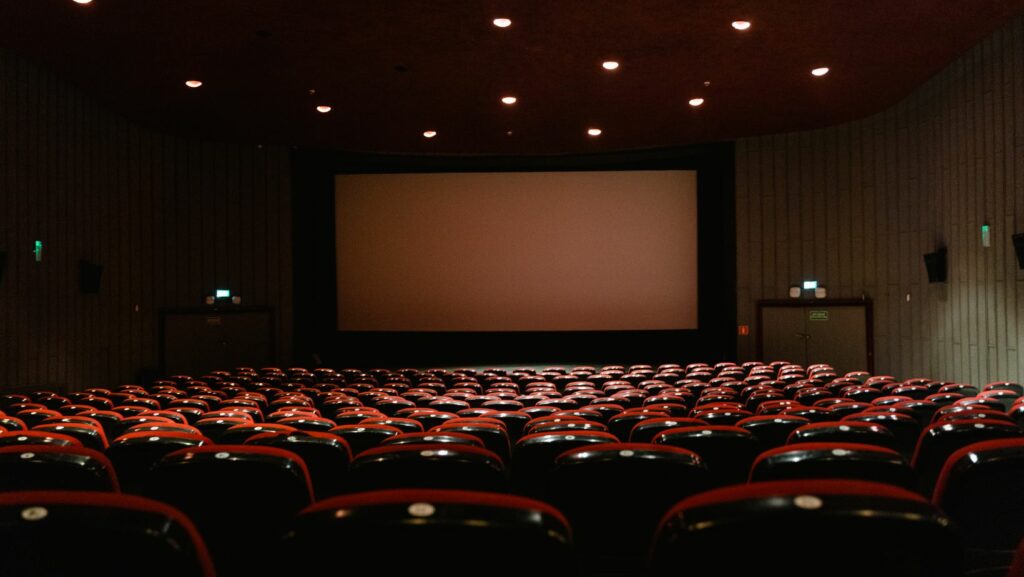Key Takeaways
- Technological Advancements: Innovations in digital filmmaking, VR, and AR are enhancing production quality and audience engagement in the cinema industry.
- Diverse Storytelling Demand: Audiences increasingly seek representation and authenticity, prompting studios to prioritize inclusive projects and diverse hiring practices.
- Rise of Streaming Services: The shift towards streaming platforms like Netflix and Disney+ is reshaping film consumption and influencing production strategies.
- Hybrid Release Models: The combination of theatrical and streaming releases is becoming standard, reflecting the evolving habits and preferences of viewers.
- Focus on Sustainability: Environmental considerations are leading studios to adopt eco-friendly practices, resonating with a growing audience of environmentally conscious consumers.
- Data-Driven Decision Making: Analytics are critical in understanding viewer preferences and enhancing marketing strategies, allowing studios to tailor content effectively.
The cinema industry is constantly evolving, shaped by technological advancements, shifting audience preferences, and global events. As streaming services gain momentum and theatrical releases adapt, understanding these trends is crucial for industry professionals and movie enthusiasts alike. From the rise of immersive experiences to the growing demand for diverse storytelling, the landscape of cinema is undergoing a significant transformation. This article delves into the key trends that are redefining how films are made, marketed, and consumed, providing valuable insights into the future of the industry.
Cinema Industry Trends
 The cinema industry undergoes continuous transformation due to several influential trends. Technological advancements shape production methods, enhance distribution channels, and improve audience engagement. Virtual reality and augmented reality create immersive experiences, allowing viewers to connect with stories on a deeper level. Changing audience preferences highlight the demand for more diverse and inclusive storytelling. In 2022, films featuring diverse leads and narratives gained popularity, demonstrating the audience’s desire for representation. Major studios increasingly focus on content that reflects varied cultural backgrounds, expanding the types of stories told.
The cinema industry undergoes continuous transformation due to several influential trends. Technological advancements shape production methods, enhance distribution channels, and improve audience engagement. Virtual reality and augmented reality create immersive experiences, allowing viewers to connect with stories on a deeper level. Changing audience preferences highlight the demand for more diverse and inclusive storytelling. In 2022, films featuring diverse leads and narratives gained popularity, demonstrating the audience’s desire for representation. Major studios increasingly focus on content that reflects varied cultural backgrounds, expanding the types of stories told.
Global events, such as the COVID-19 pandemic, significantly impact theatrical releases and streaming services. Box office revenues dropped by over 70% during the peak of the pandemic, prompting studios to adjust their release strategies. Hybrid models, combining theatrical and streaming premieres, became common, catering to evolving viewing habits.
Environmental sustainability emerges as a priority for production companies. Many organizations adopt eco-friendly practices, such as using renewable energy and reducing waste. The industry’s commitment to sustainability resonates with environmentally conscious audiences, further driving ticket sales. Data analytics plays a crucial role in understanding viewer preferences. Studios harness audience metrics to tailor marketing strategies and optimize content creation. Platforms like Netflix and Amazon Prime utilize algorithms to recommend films based on viewer habits, enhancing overall consumer satisfaction. These trends—technological innovation, diverse storytelling, hybrid releases, sustainability efforts, and data-driven decision making—shape the cinema landscape. Recognizing these trends offers insights into the industry’s future and the evolving relationship between films and their audiences.
Evolution of Cinema
The cinema industry has undergone significant changes over the decades, shaped by historical events and technological advancements. Understanding these shifts provides insight into the current trends influencing filmmaking and audience experiences.
Historical Perspectives
Historical developments in cinema reveal the medium’s dynamic nature. The early 20th century marked the emergence of silent films, capturing audiences with visual storytelling. The introduction of sound in the late 1920s transformed cinematic experiences, allowing for dialogue and music that enhanced narrative depth. The post-World War II era saw the rise of blockbuster films, fueled by star power and mass marketing techniques. By the 21st century, globalization and the internet played pivotal roles in shaping cinema, enabling the sharing of diverse stories across borders and the rise of international co-productions. Each historical shift has set the groundwork for contemporary cinema, influencing filmmakers and audiences alike.
Technological Advancements
Technological advancements continually reshape the cinema landscape. Digital filmmaking emerged in the late 1990s, providing filmmakers with greater flexibility and cost efficiency compared to traditional film methods. High-definition (HD) and 4K technologies improved visual presentation, enhancing audience immersion. Moreover, advancements in streaming services revolutionized distribution, allowing viewers easy access to films across various devices. Virtual and augmented reality technologies have recently emerged, offering interactive storytelling experiences. These innovations not only improve production quality but also cater to evolving audience preferences, creating a more engaging cinema experience.
Current Trends Shaping the Industry
The cinema industry experiences dynamic shifts reflecting changes in technology, audience expectations, and cultural landscapes. Several key trends shape its evolution.
Streaming Services Impact
Streaming services dominate film consumption, transforming how audiences access content. Platforms like Netflix, Amazon Prime, and Disney+ boost competition, leading studios to prioritize their digital distribution strategies. The rise of subscription models enables filmmakers to reach wider audiences quickly. Box office revenues have declined, but streaming viewership rises, urging the industry to adapt to on-demand viewing preferences. The success of original streaming content illustrates the industry’s pivot toward producing engaging, high-quality films directly for digital platforms.
Rise of Diversity and Inclusion
Diversity and inclusion are vital in modern storytelling. Audiences increasingly demand representation of varied cultural backgrounds and experiences. Successful films like “”Black Panther”” and “”Crazy Rich Asians”” showcase diverse casts and narratives, influencing industry standards and practices. Studios respond to this trend by prioritizing inclusive projects and hiring diverse talent both in front of and behind the camera. This shift reflects broader societal movements and promotes the exploration of rich, authentic stories that resonate with diverse demographics.
Changes in Audience Preferences
Audience preferences are shifting toward immersive and interactive storytelling experiences. The incorporation of augmented reality and virtual reality elements enhances engagement and captivates viewers. Subscription-based models and access to global content create personalized viewing habits, allowing audiences to curate their experiences. Younger viewers prefer content that fosters emotional connections, prompting studios to focus on storytelling depth and thematic relevance. This evolution influences how films are produced, marketed, and consumed, ensuring the industry aligns with contemporary viewer expectations.
augmented reality and virtual reality elements enhances engagement and captivates viewers. Subscription-based models and access to global content create personalized viewing habits, allowing audiences to curate their experiences. Younger viewers prefer content that fosters emotional connections, prompting studios to focus on storytelling depth and thematic relevance. This evolution influences how films are produced, marketed, and consumed, ensuring the industry aligns with contemporary viewer expectations.
Future Predictions for the Cinema Industry
The cinema industry is poised for significant transformation, driven by innovative formats and a commitment to sustainability. These elements will play a crucial role in shaping the industry’s future.
Innovative Formats and Experiences
Innovative formats and experiences are set to redefine audience engagement. Technologies like virtual reality (VR) and augmented reality (AR) will create immersive film experiences that blur the lines between storytelling and interactivity. Cinemas are expected to adopt multi-sensory experiences, integrating sound, visuals, and tactile elements to enhance viewers’ emotional connections. Additionally, interactive storytelling will gain popularity, allowing audiences to influence narrative outcomes, further engaging them in the cinematic experience. High-quality streaming services will continue to evolve, offering exclusive releases and premium viewing options that cater to diverse preferences, making films more accessible across various platforms.
Sustainability in Film Production
Sustainability in film production will increasingly inform industry practices. A growing number of production companies are implementing eco-friendly techniques, from reducing waste on set to utilizing renewable energy sources. Certification programs, such as the Green Production Guide, are encouraging studios to prioritize sustainable practices. Audiences are becoming more environmentally aware, prompting filmmakers to incorporate themes of sustainability into their narratives. Initiatives like carbon offset programs and sustainable sourcing materials will become standard, promoting both social responsibility and attracting eco-conscious viewers. As the industry embraces sustainability, it fosters a positive impact on the environment while enhancing its reputation among audiences. The cinema industry is undergoing a remarkable transformation driven by technology and audience demands. As immersive experiences and diverse storytelling take center stage, filmmakers are adapting to create content that resonates with modern viewers. The shift towards digital distribution and hybrid release models reflects changing consumption patterns, ensuring accessibility for wider audiences. Sustainability is becoming a vital consideration in production practices, aligning with the values of environmentally conscious viewers. By leveraging data analytics, studios can better understand audience preferences, optimizing their strategies for success. As these trends continue to evolve, the future of cinema promises to be dynamic and inclusive, fostering a deeper connection between films and their audiences. The industry is poised for exciting developments that will redefine how stories are told and experienced.



